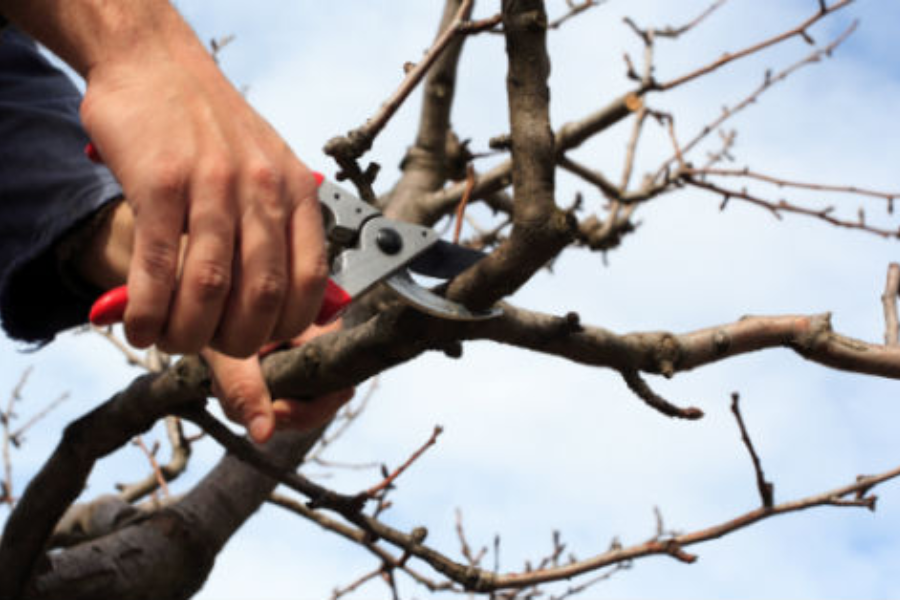You’ve got some trees that need a trim. Maybe the branches are getting a little out of control, blocking the sun or scraping the roof. Or maybe you just want to give your trees a nice shape. Whatever the reason, tree trimming can seem daunting if you’ve never done it before. But with the right tips, tools, and techniques, you can have those trees looking shapely in no time. In this guide, you’ll learn all the ins and outs of DIY tree trimming. We’ll walk through the basics like timing, safety, and what equipment you’ll need
When to Trim Your Trees
The ideal time to trim trees depends on whether they are deciduous (shed leaves yearly) or evergreen. For deciduous varieties like oaks and maples, late winter is perfect – when they’re dormant but before new growth emerges. Evergreens like pines fare best with trims in early spring or late fall when growth slows down. You’ll want to trim when branches start obstructing pathways, rubbing on the home’s roof or siding, or getting tangled in utility lines. Overgrown trees can also block sunlight from reaching parts of your lawn or garden beds. Dead, damaged or diseased limbs should be removed promptly before they break off. Most trees thrive with yearly trimming. But some flowering varieties like crepe myrtles are “bloomers on old wood” – they set buds on last year’s growth. With these, wait until just after the blooming season to trim.
DIY Tree Trimming Tips and Tricks
- Know Your Trees
Before you grab those pruners, take a moment to understand the type of tree you’re dealing with. Deciduous trees like maples and oaks have different needs than evergreens such as pines or spruces. Familiarize yourself with the ideal pruning season and methods for your specific tree species. This knowledge will ensure your trimming efforts don’t do more harm than good.
- Timing is Key
There’s a best time for everything, including tree trimming. As a general rule, prune trees during their dormant season when they’re not actively growing. For most species, late winter or early spring works well. Avoid trimming in summer when trees are stressed from heat and pests.
- Prune With Purpose
Haphazard trimming can weaken and disfigure your trees. Always have a clear objective in mind, whether it’s thinning out overcrowded branches, removing dead or diseased limbs, or shaping the overall structure. Prune judiciously, taking care not to remove more than one-fourth of the tree’s branches in a single season.
- Tools of the Trade
Invest in quality pruning tools designed for the job. Hand pruners are ideal for twigs and small branches, while long-handled loppers can handle thicker limbs up to 2 inches in diameter. For larger branches, you may need a pruning saw. Keep your tools sharp and clean to prevent damage to the tree.
- Proper Technique
When cutting branches, make clean, angled cuts just above an outward-facing bud or branch collar. Avoid leaving stubs, which can invite disease and pests. For larger limbs, use the three-cut method to prevent tearing bark and damaging the trunk. And remember, safety first – don’t take on branches you can’t reach from the ground.
- Care and Maintenance
After trimming, apply a tree-safe pruning sealer or paint to exposed cuts to prevent infection or insect damage. Monitor your trees closely for signs of stress or disease, and be prepared to provide extra water and nutrients as needed during the recovery period.
Professional Tree Trimming Services
- Finding the Right Experts
You know those towering trees that grace your yard or property? As majestic as they are, keeping them trimmed and well-maintained is crucial. But tree trimming isn’t something you should tackle alone – it requires specialized skills and equipment. That’s where professional tree trimming services come in like Tree Trimming in Virginia.
These experts have the knowledge and experience to safely and efficiently prune your trees. They understand the intricate biology of different species, ensuring each cut promotes healthy growth. Plus, they have access to top-notch tools like cherry pickers and pole saws, making even the trickiest branches accessible.
- Why Hire the Pros?
Sure, you could try your hand at tree trimming. But do you really want to risk injury from falls or improper cutting techniques? Professionals prioritize safety above all else, following industry best practices to the letter.
Beyond that, a poorly pruned tree can become weak, diseased, or even die prematurely. Certified arborists know exactly where and how much to trim, preserving your trees’ structural integrity and longevity. Their expertise ensures your greenery thrives for years to come.
- Finding a Reliable Company
Not all tree trimmers are created equal. When vetting potential companies, look for:
- Proper licensing and insurance to protect you from liability
- Stellar reviews and a proven track record of quality work
- Use of modern, well-maintained equipment
- Commitment to sustainable practices and protecting the environment
With a bit of research, you’ll find a tree care crew you can trust to keep your landscape looking its best.
Final words
Everything you need to know to tackle tree trimming with confidence. By following the simple tips in this guide, you’ll be able to keep your trees looking their best without breaking the bank on professional services. Just take it slow, use the right tools, and don’t be afraid to ask for help if you need it. Tree trimming doesn’t have to be intimidating. With a little know-how and some elbow grease, you can handle this DIY project and be proud of the results. Your trees will thank you for taking good care of them. So grab those loppers, make sure your safety gear is on, and get ready to shape up your trees!
